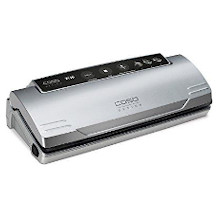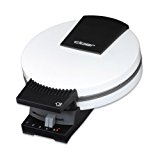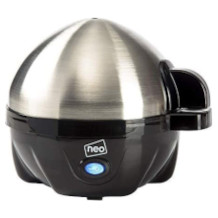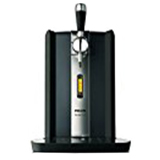Preserving cooker purchasing advice: how to choose the right product
- The most important facts in a nutshell
- An automatic preserving machine is an all-round kitchen machine that is practical for various applications.
- Automatic preservers preserve food by heating it, the food is absolutely germ-free after waking.
- Buyers should make sure that the automatic preserving machine is equipped with an overheating protection.
- With some models, users can also juice and mash.
- Automatic preservers are used all year round.
This is a preserving machine
Do-it-yourself topics are totally in vogue. Among the most popular do-it-yourself topics are growing food in your own garden or on the balcony and preparing healthy meals. Thanks to these trend developments, the practical automatic preserving machines are very popular. Even our own great-grandparents used preserving pots to preserve food for a longer period of time. At that time, preserving vegetables, fruit and meat was common practice, as there was hardly any access to fresh food during the winter months.
Nowadays, the popularity of automatic preservers has less to do with the fact that we can’t buy the food and more to do with the fact that people want to cook for themselves more often again. Modern automatic preservers also have other functions that go beyond preserving. Unlike back then, today’s products work electrically. A cooker is not needed, users only need a working socket.
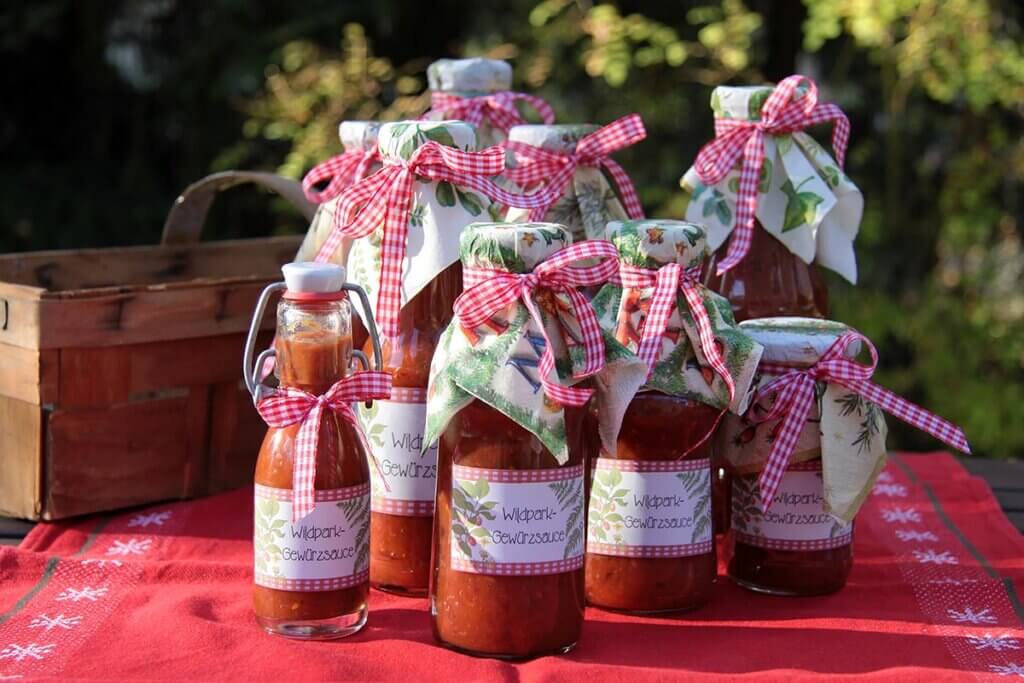
By the way, preserving is also called einwecken because the oldest and best-known manufacturer of these products bears the name Weck. Johann Carl Weck first applied for a patent around the 1890s. The principle of preserving still works today just as it did back then.
Well-known brands: Weck | Rommelsbacher | Bielmeier | Kochstar | Klarstein | Severin | Steba
These are the advantages of an automatic preserving machine
Modern automatic preservers are versatile. Since they are relatively easy to use, both professional chefs and cooking novices benefit from their use in the long term.
- You always know exactly what you are eating.
- Everything is homemade and therefore free of preservatives.
- You benefit from your own harvest for months or even several years.
- Even food that has already been cooked can be preserved for longer with canning.
- Canning machines are also suitable for keeping food warm easily.
- Canning works with vegetables, fruit and meat.
- They are easy on the environment because all preserving jars have multiple uses.
- This means less waste production.
- This saves you money.
- Seasonal products can be enjoyed at any time.
- Some models can also be used as juicers.
- Other appliances can also brew beer.
These advantages show why preserving food is no longer only popular with grandparents. Preserving pots are suitable for every household, then as now.
These are the essential functions
In the past, cooks used to put their preservers or pots on the cooker or in the oven. Essentially, this procedure also worked well, but preserving took a lot of time. Modern, electric devices are much more convenient to use. When the machine is plugged into a socket, the heating coil or base installed in the bottom of the jar heats up and provides even heat throughout the appliance. The contents of the previously set jars are sterilised and microorganisms are killed. Some products have different setting and application options. Consumers can perform the following tasks with a preserving pot.
Preserving
With this product you can preserve food. Users fill previously prepared jars with the desired food. These are sealed tightly and then placed in the preserving machine. Stacking is permitted. However, users should note that for some appliances it is useful to place a grid over the heating coil so that the jars stand correctly. However, a rack is not necessary for all machines. Next, users fill the canner with water so that the top jars are almost completely covered. Pay attention to time and temperature setting options.
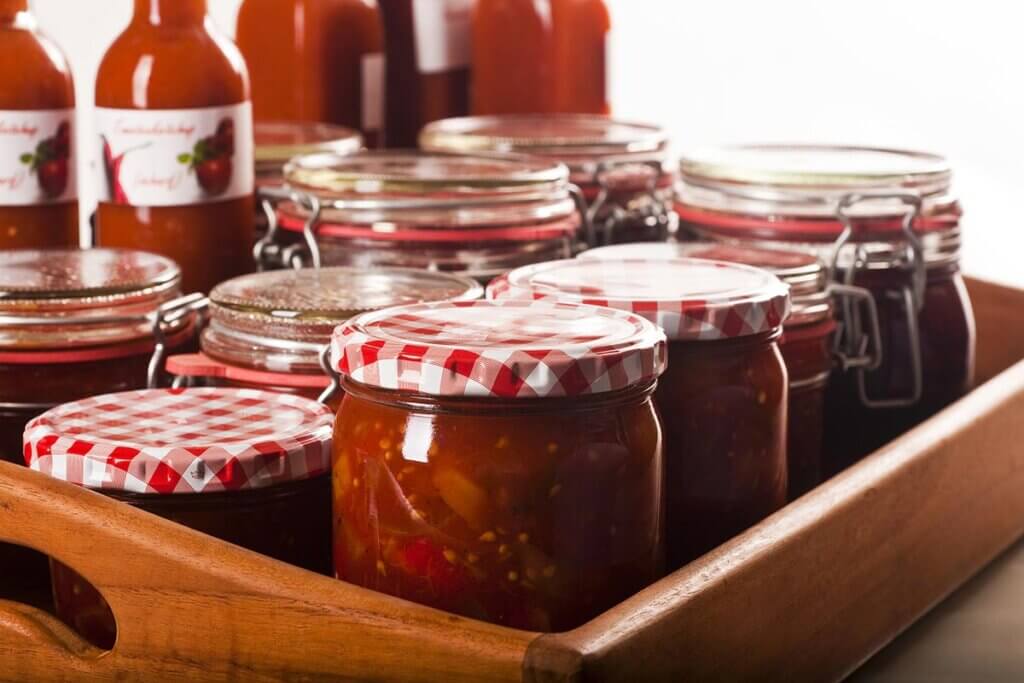
Can I also cook properly with a preserving pot?
A preserving pot is not suitable for cooking and frying dishes. When trying to fry something, the bottom would stick. This could eventually lead to the machine becoming unusable. Automatic preservers are only designed for preserving or heating food. However, finished soups can be reheated at any time. However, consumers should take care that the temperature does not get too hot and that the soup does not stick to the bottom.
Keeping warm
Automatic preservers are not only suitable for preserving, but also for simply keeping warm. They are therefore extremely popular with mulled wine and tea drinkers in winter. Other dishes such as soups or stews also retain their heat in them. If a preserving cooker also has a spout, removing the liquid is particularly practical. Simply hold a cup underneath and turn the tap.
Juicing
Some preservers can be converted into a juicer. However, for this you need special juicer accessories, the juicer attachment (or insert). This can either be purchased later or is already included in the delivery. Users throw the selected fruit or vegetables into the appliance, whereupon the ingredients are juiced with steam. A spout helps to portion the fresh drink.
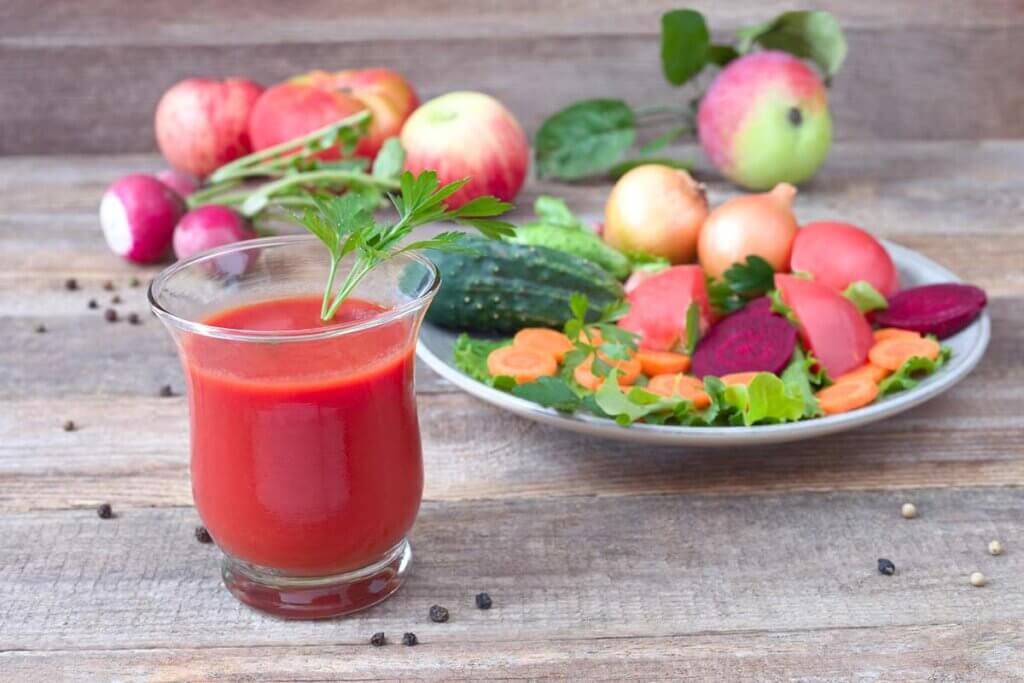
Mashing
Beer lovers also get their money’s worth. Some automatic preservers are also suitable for mashing if you use a precision thermostat to set the exact time and heat settings. But beware: you also need a lauter tun.
These different models are available
While some appliances are more suitable for the cosy preservation of jam, other products are true multi-talents. The latter score with additional functions such as juicing. Some models have a timer for setting the time. Still others are recommended for the catering industry because they can hold litres of liquid. It quickly becomes clear which appliances are suitable for which purposes. For occasional boiling down in single households, the boilers without additional functions are perfectly adequate.
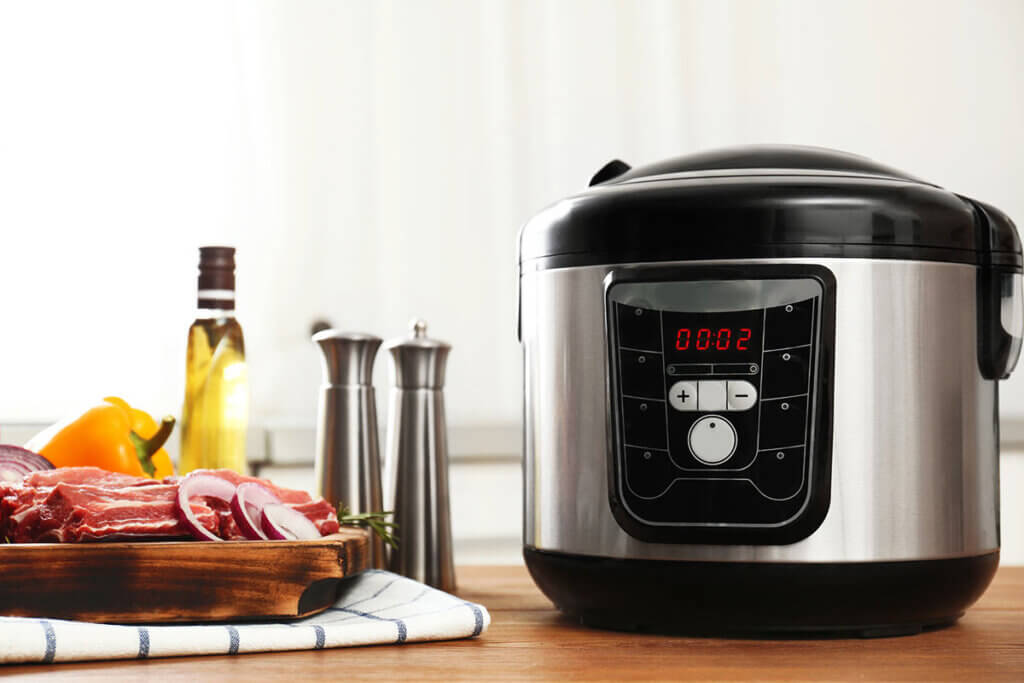
If you also want to juice, find out about appliances with an integrated juicer function. However, if you want to keep large quantities of food warm on a regular basis, it is worth buying a food preserver with a cooking function. Here is an overview of the advantages and disadvantages of the different models of automatic preservers:
Automatic preserving cooker without additional function
Buyers have to spend between 40 and 180 euros to purchase an automatic preserving machine without an additional function. With these appliances, it is usually not possible to juice fruit and vegetables. Many of the very inexpensive products also do not have an integrated timer. These appliances only have a large interior. A drain tap for dispensing liquids is also not available.
Pro points
- Inexpensive purchase
- Space-saving in the cupboard
- No accessories necessary
Drawbacks
- No juicing possible
- Usually no timer
- No drain tap for drinks
Automatic preserving machine with juicer function
For appliances with a juicer function, buyers dig a little deeper into their wallets. Prices vary between around 60 and 200 euros. The purchase is worthwhile if users want to produce juices or keep mulled wine or tea warm. An integrated drain tap helps with tapping. These models have two compartments inside, one for the water, one for the juicer food. Buyers should note that the juicer part must be purchased separately for some appliances.
Pro points
- Juicing possible
- Drain tap available
- Versatile use
Drawbacks
- Expensive to buy
- Takes up a lot of cupboard space
- Accessories must potentially be purchased
- Time-consuming cleaning
Automatic preserving machine with cooking function
The cooking function in automatic preservers is mainly used by catering businesses and restaurant operators. For individual households and smaller family groups, this purchase is not worthwhile. These automatic preservers have a very large capacity and, with the help of a precision thermostat, reliably heat up very large quantities or keep them warm. Due to their size, they take up a lot of space. The price range is from around 150 euros to around 400 euros. Automatic preservers with a cooking function are therefore in the top segment in terms of price.
Pro points
- Heats large quantities
- Suitable for many people
- Convenient pouring
Drawbacks
- Expensive to buy
- Takes up a lot of space
- Complex cleaning
Alternatives to automatic preservers
Normal cooking pots that have a large volume are also suitable for preserving food. Stack the preserving jars in it and fill the pot with water. The top jar should be three-quarters covered with water. Put the pot on the cooker and turn on the plate. The disadvantage here is that you have to keep a constant eye on the cooker. If necessary, check the temperature with a thermometer. Also keep an eye on the time by setting yourself a timer.
In fact, the canning method also works in the oven, but is used much less frequently. For this, you need a deep baking tray on which to position the jars. Fill the baking tray with water. Then turn on the oven and set a timer.
There are also preserving pots that are very similar to the automatic preserving machine. The big difference is that these devices do not have a connection for electricity. Preserving pots are therefore placed on the cooker. However, unlike normal cooking pots, they have a place for the thermometer. This is located on the lid of the pot. Users place the thermometer there to keep an eye on the temperature during the boiling process.
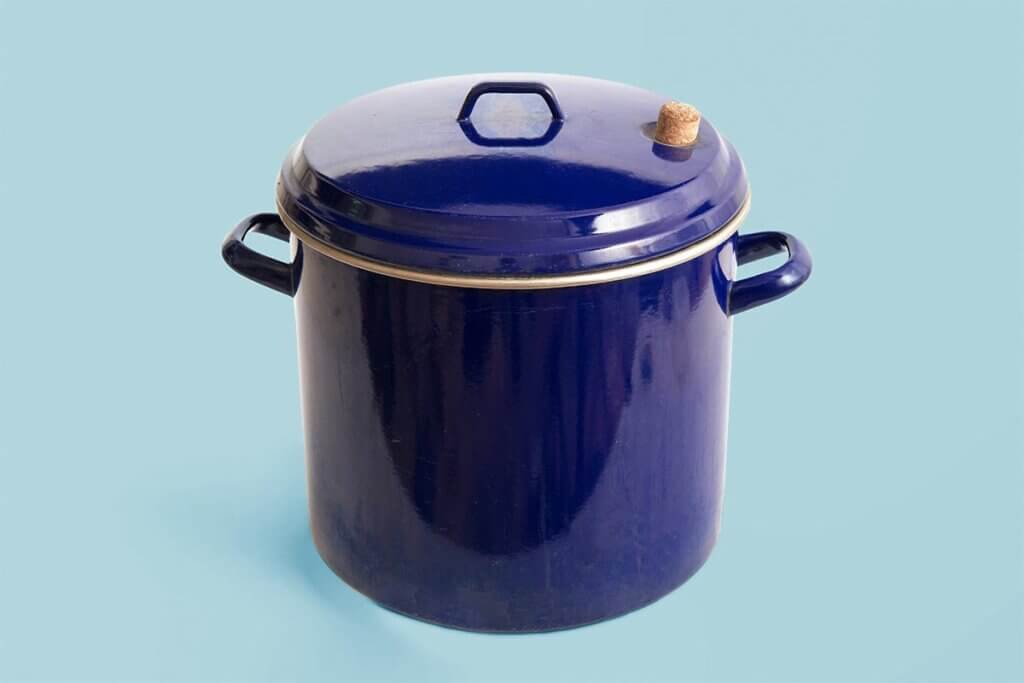
Which purchase criteria are most important?
Before making a purchase decision, potential buyers consider the purposes for which they intend to use an automatic cooking machine. Consider how often, for how many people and what exactly you intend to boil down. For example, if you often boil down food for a lot of people, a high-capacity boiling machine makes sense. For users who live in a small household and only cook occasionally, an automatic preserver without additional functions is recommended. Or, for example, if you mainly want to make jam – and possibly for a large group of people – you need an appliance with a large capacity and, ideally, a juicer function.
Capacity
The capacity of the appliance is particularly important if large quantities are to be boiled down or heated frequently. Normally, the products have a volume of at least 25 to 30 litres. These automatic preservers can hold about twelve jars. However, there are also very small preservers with a capacity of ten litres. This would hold about five jars. These are suitable for single households, for example.
Capacity
The power of automatic preservers is always given in watts and is between 1,800 and 2,000 watts for good-quality models. The higher the power, the faster the appliance heats up. If the product has a very large volume, a high output also makes sense. Otherwise, heating takes a long time.
Material
Most boilers are made of stainless steel. Some are made of plastic. A layer of enamel makes the appliance more expensive, but brings some advantages. The enamel coating ensures a longer shelf life and prevents bacteria build-up. It also protects the appliance from rust and is easy to clean.
Double enamel coating advisable
An enamel coating is not scratch-resistant and can peel off. Buyers should make sure to choose an appliance with a double enamel coating. Do not use hard sponges for cleaning.
What does the abbreviation “BPA” mean?
The abbreviation “BPA” stands for “bisphenol A”. If manufacturers claim that the product is BPA-free, this means that this basic substance, which is often used to make plastics, has not been used in the production process. BPA makes plastic materials stronger and lighter. However, there is a suspicion that the material is harmful to health. When heated strongly, BPA can possibly pass into the food. So utensils that have a BPA-free mark are more likely to be recommended.
Safety first
To make canning as safe as possible for all users – whether beginners or canning professionals – look out for the following three safety features:
- The overheating protection is used to switch off the preserver if the temperature is too high. This guarantees that the appliance will not be damaged by overheating.
- A dry-boil protection prevents the appliance from being activated if too little or no water has been poured in.
- Most good automatic preservers also have heat-insulated handles so that users do not have to scald their hands or handle complicated cooking cloths.
More convenience
If you often preserve food, keep food warm for lots of people or want to try brewing beer, these four features will be of interest to you:
Drain tap
A drainage tap helps when dispensing liquids. This function should be integrated if you often want to pour hot drinks.
Timer
To avoid waiting longer than absolutely necessary, many manufacturers install a timer. It makes boiling down or heating up much easier, as users do not have to constantly check their own clock to see whether the desired boiling-down time has been reached. This is particularly helpful when heating soups so that they do not accidentally stick to the bottom.
Insert rack
An insert grate can help in several ways. Firstly, the grate makes it easier to stack preserving jars. Secondly, inserting a grate also makes sense if you want to brew beer. Thirdly, the contents of the preserving jar heat up more quickly if there is a certain distance between the base and the grate, because the heat then spreads better.
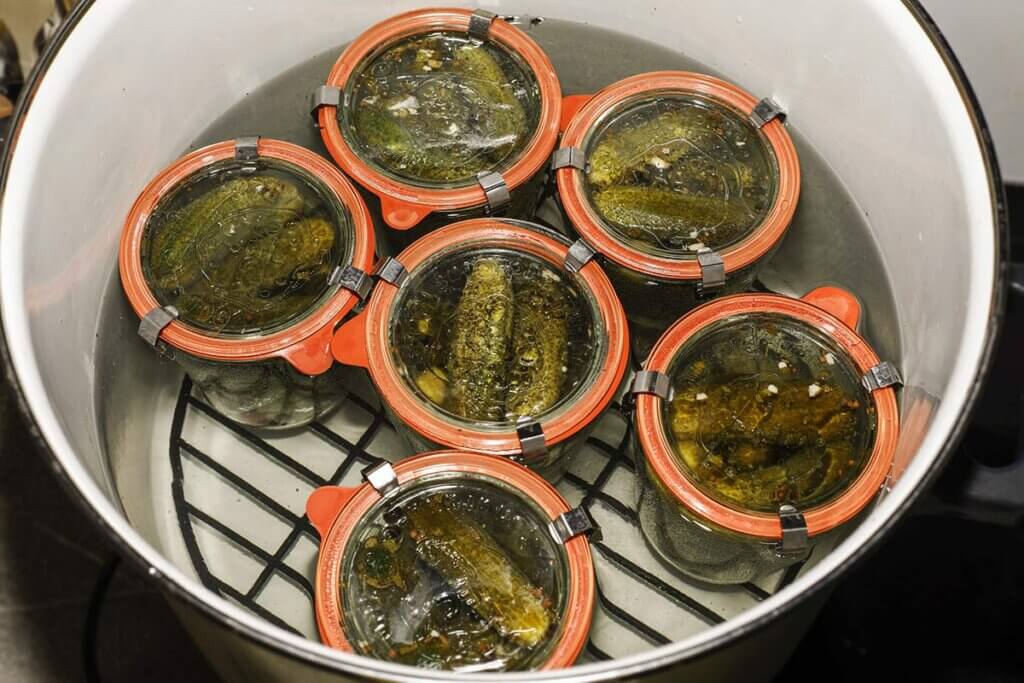
Temperature control
With a temperature control, users can precisely control which foods are boiled down at which temperature. This is especially useful for brewing beer. Most machines reach temperatures of 30 to 100 degrees Celsius. For brewing, users always need an appliance that reaches 100 degrees Celsius.
Tips for use and proper care
For best results in canning and juicing, users should pay attention to the following four important points:
- Correct procedure for preserving
- Correct procedure for juicing
- Storing the preserved food
- Cleaning the food preserver
These procedures are described in detail below. Always also read the instructions for use supplied with the food preserving machine. This guarantees that nothing can go wrong.
What should I bear in mind when canning?
Before consumers start canning, they clean the food and cut it into small pieces so that they fit into the canning jars in layers. Next, fill the jars with a mixture of water and a little sugar for fruits – or water with salt for vegetables. If you prefer more spices, use them. Now seal the Weck jars. It is especially important to make sure that they are absolutely tight. Otherwise the preserving will not work properly. Preserving jars that have a rubber seal around the rim are best. Now place the filled jars in the preserving machine, stacking is possible to make the best use of the space. Next, add enough water to the pot until the upper preserving jars are three-quarters full of water. Put the lid on, set the temperature and time, and you’re done.
These jars are best suited
In principle, you can use all jars that can be closed absolutely tightly. It is important to distinguish between glasses with screw caps and glasses with rubber caps. The rubber is on the rim of the glass. Some also have a metal closure. The most popular are still the typical preserving jars with a rubber seal because they seal the most securely. The great advantage of preserving jars is that you can reuse them at any time.
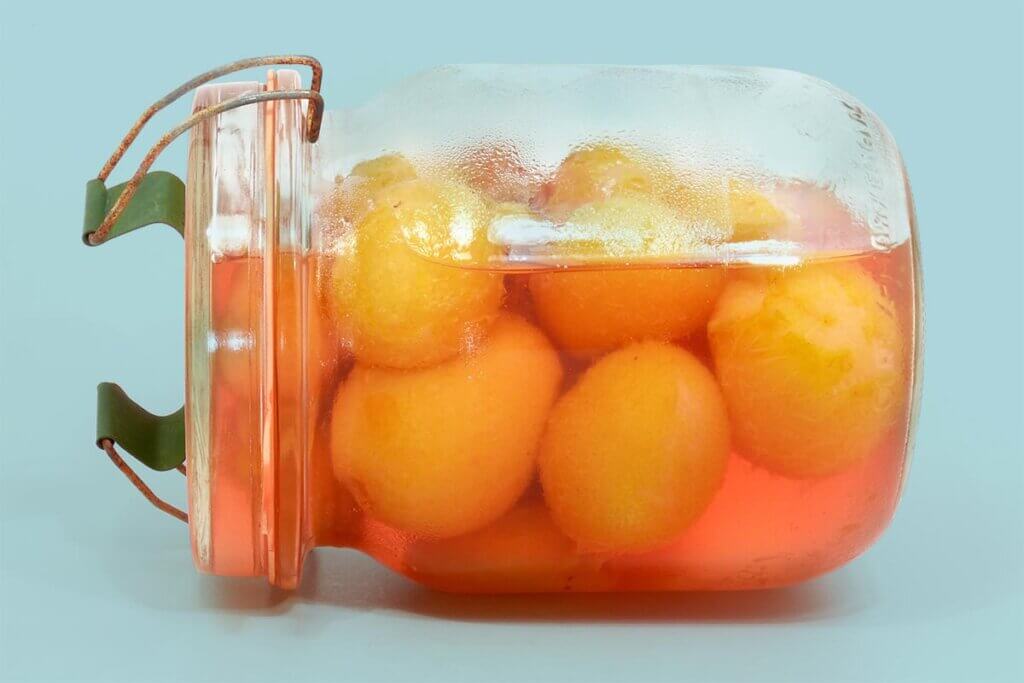
How does juicing with an automatic preserving machine work?
As with normal preserving, fill the machine with water. If necessary, place a fitting ring on the juicer. Then place the juicer sieve or the juicer attachment and the fruit container in the pot and put in the pieces of fruit or vegetables that have been cut into small pieces. The sieve is located in the upper part of the juicer. Next, activate the juicer function – and you’re ready to go. Steam enters through holes in the fruit basket, the fruit is juiced and the juice runs out through the holes into the collecting vessel. A spout or tap helps to dispense the drink. Seal the bottles or jars immediately after filling. If necessary, follow the steps listed in the instructions for use. To get the tastiest results, it is recommended to use very ripe fruit or vegetable pieces.
Steaming time
Different types of fruit also require different steaming times. After the preserving pot has heated up, which usually takes about 25 minutes, the actual steaming time begins. Apples and pears, for example, need about 90 minutes, blueberries only about 60 minutes. Blackberries and strawberries need about 45 minutes. Plums and peaches are ready in about 75 minutes. The different times are related to the respective texture of the fruit.
The correct storage of food
Food is sterile after it has been preserved or juiced. As long as you do not open the preserved jars, they will keep because of the airtight seal. Store the jars in a cool, preferably dark place such as:
- On a cellar shelf
- In a pantry without windows
- On lower kitchen shelves with little light coming in
Harmless discolouration possible when exposed to light
Keep the glasses away from moisture and high levels of light. However, if they are constantly stored in a very bright environment, the food in the jar may discolour and become paler. However, this does not affect the shelf life, the food might just look less appetising. As a rule, preserved food can be kept for one year – even longer depending on the sugar content. As soon as the jars are opened, they must be put in the refrigerator and should be used up within a short time.
When storing juiced food, it is important to note that the liquid must be filled and sealed while it is still hot, more precisely at 75 degrees Celsius or hotter. Only then is it guaranteed that the product is still germ-free. For storage, the same applies as for preserved jars.
Care and cleaning
To ensure that consumers benefit from their automatic preserving jars for a long time, there are a few points to consider when it comes to care and cleaning.
- Like almost every kitchen appliance that comes into contact with food, you should also clean a new automatic preserving machine before using it for the first time.
- After every single use, the appliance must be cleaned inside and out.
- If the model has a drain tap or tap, clean it separately.
- For cleaning, users should use water and a mild detergent. Corrosive agents are taboo. Appliances with an enamel coating are particularly sensitive.
- Use a soft sponge to avoid scratching the material.
- If limescale forms, users should use citric acid or special descaling agents.
- Let the machine dry before putting it away. This prevents the formation of mould.
- Some parts of automatic preservers are dishwasher safe. Read the instructions for use.
- Never immerse the entire machine in water! This could cause a short circuit.

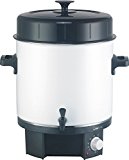
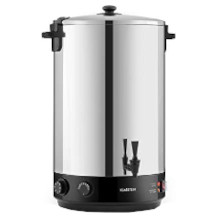
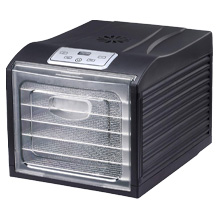


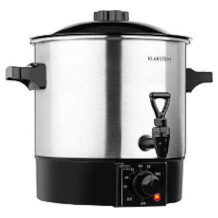
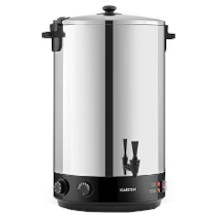
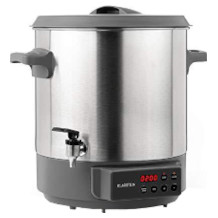
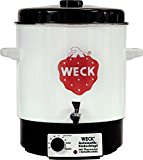
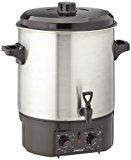

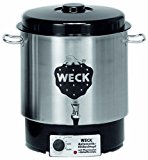
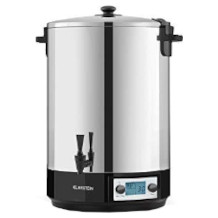
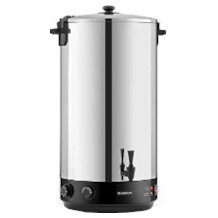

 547 reviews
547 reviews

